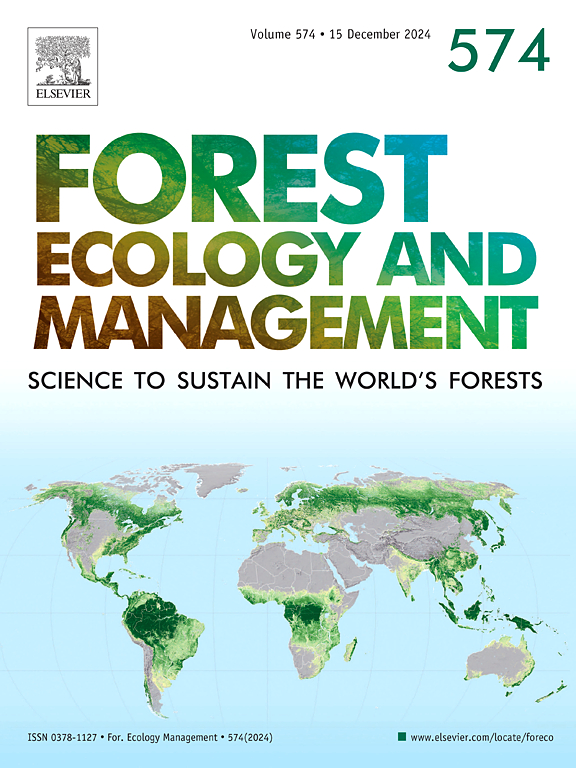Mechanisation of forest operations drives long-term changes in plant communities
IF 3.7
2区 农林科学
Q1 FORESTRY
引用次数: 0
Abstract
Using a permanent network of plots, we resurveyed vegetation in a broadleaved forest of northeastern France, tracking the effects of climate change, eutrophication and forest management between 1990 and 2022. To better detect the impact of mechanisation on plant communities, we established subplots based on microtopography (skid trails and wheel tracks) and recorded species separately in these subplots. We then tested changes in species’ frequency and used ordination to analyse changes in communities’ composition. Shifts were assessed using species’ indicator values in plots and subplots, as well as regression analysis of plot shifts on axis 1 of the correspondence analysis as a function of stand characteristics, vehicle disturbances, canopy openings, game pressure, storm impact and ownership. Results showed a progress of non-forest species, hygrophilous species and species preferring wheel tracks and skid trails. Compaction from forestry vehicles was associated with an increase in indicator values for soil moisture and nitrogen. The projection of subplot surveys onto the correspondence analysis confirmed wheel tracks and skid trails as the main driver of observed vegetation shifts. These, as well as canopy openings, were significant in the regression analysis. Although we observed thermophilisation of plant communities (+0.27 °C per bioindication) which lagged behind recorded temperature increase (+1.5 °C), this was only a minor cause of overall vegetation changes. Mechanisation is therefore becoming a driver of vegetation changes at the scale of entire forests. As the use of harvesters in temperate deciduous forests increases, the planning of forestry operations should better account for these impacts on vegetation.
求助全文
约1分钟内获得全文
求助全文
来源期刊

Forest Ecology and Management
农林科学-林学
CiteScore
7.50
自引率
10.80%
发文量
665
审稿时长
39 days
期刊介绍:
Forest Ecology and Management publishes scientific articles linking forest ecology with forest management, focusing on the application of biological, ecological and social knowledge to the management and conservation of plantations and natural forests. The scope of the journal includes all forest ecosystems of the world.
A peer-review process ensures the quality and international interest of the manuscripts accepted for publication. The journal encourages communication between scientists in disparate fields who share a common interest in ecology and forest management, bridging the gap between research workers and forest managers.
We encourage submission of papers that will have the strongest interest and value to the Journal''s international readership. Some key features of papers with strong interest include:
1. Clear connections between the ecology and management of forests;
2. Novel ideas or approaches to important challenges in forest ecology and management;
3. Studies that address a population of interest beyond the scale of single research sites, Three key points in the design of forest experiments, Forest Ecology and Management 255 (2008) 2022-2023);
4. Review Articles on timely, important topics. Authors are welcome to contact one of the editors to discuss the suitability of a potential review manuscript.
The Journal encourages proposals for special issues examining important areas of forest ecology and management. Potential guest editors should contact any of the Editors to begin discussions about topics, potential papers, and other details.
 求助内容:
求助内容: 应助结果提醒方式:
应助结果提醒方式:


